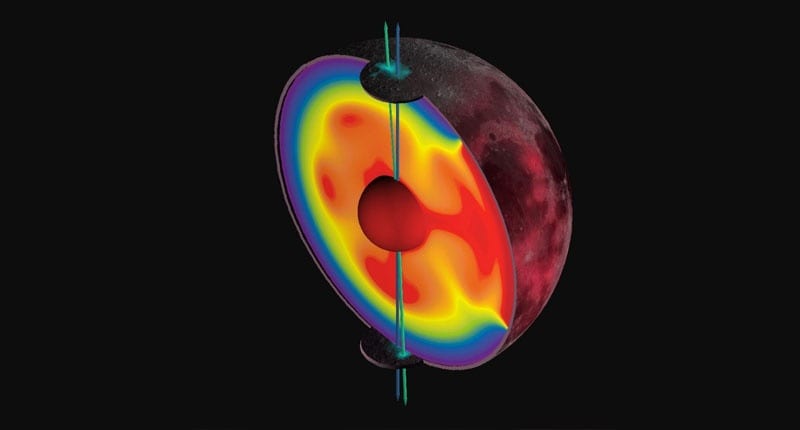Agence France-Presse covered the research of SMU planetary scientist and research assistant professor Matthew Siegler and a team of scientists who discovered the moon wandered off its axis billions of years ago due to a shift in its mass most likely caused by volcanic activity.
The article, “Moon’s ‘wandering poles’ shifted long ago: study,” published March 24 at The Japan Times and Raw Story, among other news sites. A report on the discovery of the rare event was published today in Nature: that Earth’s moon slowly moved from its original axis roughly 3 billion years ago.
EXCERPT:
By Agence France Presse
Telltale patches of water ice on opposite ends of the Moon reveal that Earth’s orbiting companion once spun on a different axis, according to a study released Wednesday.The six-degree tilt, which happened several billion years ago, was likely caused by an ancient volcanic formation on the near side of the Moon, said the study, published in Nature.
The data underlying this startling discovery has been in plain view for nearly two decades, but scientists had failed to connect the dots, one of the researchers told AFP.
“It was kind of hidden because of the way we plotted polar maps,” explained co-author James Keane, a researcher at the University of Arizona.
Two-dimensional representations create a subtle distortion, obscuring the fact that observed concentrations of ice near each pole were exactly 180 degrees apart — and thus on an axis running through the dead centre of the Moon.
“That is my pet hypothesis about why nobody thought about this before,” Keane said.
The man who finally put the top-and-bottom pieces of the lunar puzzle together was co-author Rich Miller of the University of Alabama.
Having located the largest concentrations of water ice near the current north and south poles by detecting hydrogen molecules — the “H” in “H2O” — he rotated a 3-D model to see how they would line up.
“He found a Sigma-8 correlation,” which means that the odds of it being a coincidence were about one-in-a-million, said Keane.
Follow SMUResearch.com on twitter at @smuresearch.
SMU is a nationally ranked private university in Dallas founded 100 years ago. Today, SMU enrolls nearly 11,000 students who benefit from the academic opportunities and international reach of seven degree-granting schools. For more information see www.smu.edu.
SMU has an uplink facility located on campus for live TV, radio, or online interviews. To speak with an SMU expert or book an SMU guest in the studio, call SMU News & Communications at 214-768-7650.



 NASA data leads to rare discovery: Earth’s moon wandered off axis billions of years ago
NASA data leads to rare discovery: Earth’s moon wandered off axis billions of years ago Good news! You’re likely burning more calories than you thought
Good news! You’re likely burning more calories than you thought New look at Pizarro’s conquest of Inca reveals foot soldiers were awed by empire’s grandeur
New look at Pizarro’s conquest of Inca reveals foot soldiers were awed by empire’s grandeur